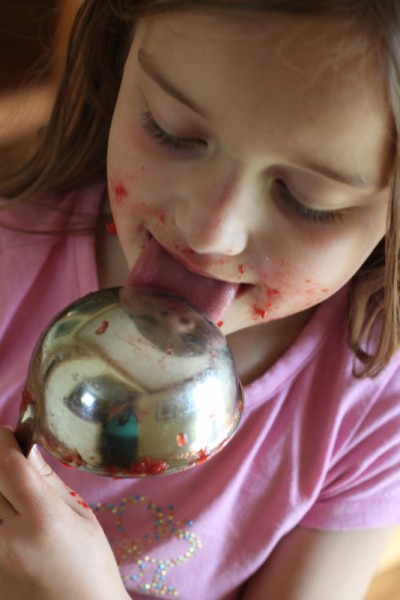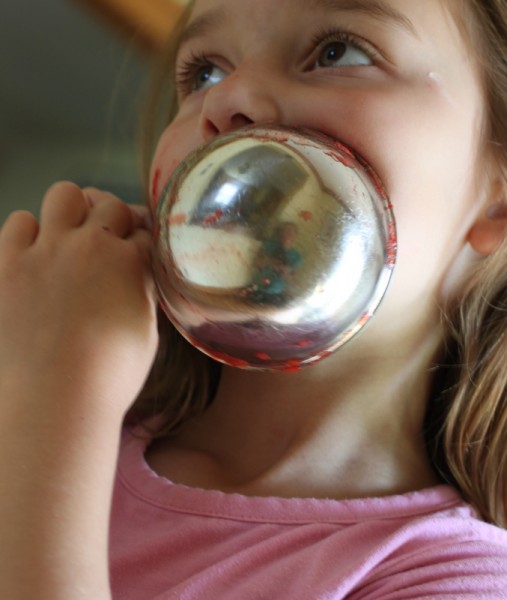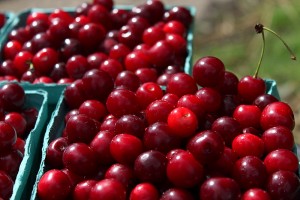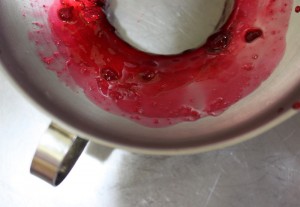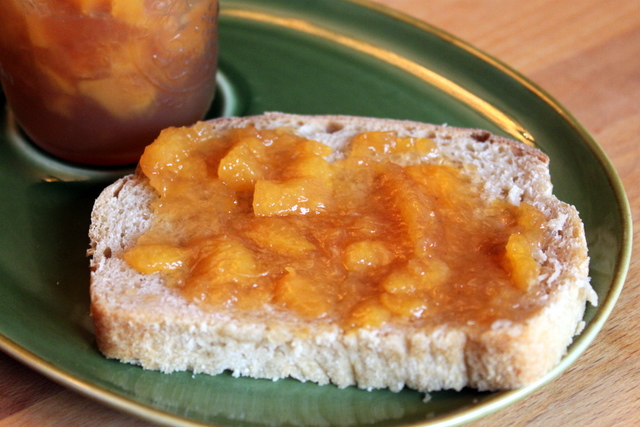Confessions {Friday Five}
 1. I like to make jam but I rarely eat it.
2. Same with pickles. Hence, my pantry is overabundant and I give many jarred gifts.
1. I like to make jam but I rarely eat it.
2. Same with pickles. Hence, my pantry is overabundant and I give many jarred gifts.
3. I failed at worm composting last year. I so don't like squishy creatures that I hated tending the box and turned the wigglers lose in my compost bin in the summer. I am keeping my awesome One20 Farm composter with the hopes that someday I'll get over my fear or convince Lil to tend worms for me.
4. I don't like the way I look on tv or in pictures. Thankfully this video segment on local news about moms who blog with Mikaela Hunt included beauties Amy Turn Sharp, Diane Davis Lang, Susie Owens, and Wendy Hondroulis to counter my awkwardness.
5. Alex is a better cook than I. He makes sauces, garnishes dishes and attempts recipes that I simply do not take time for.
6. (Bonus because I had to share the picture!) I take unwarranted pleasure in bathing the little dog. She hates it but Lil and I smirk as we wash her filthy body.
Really, Rugelach? {Wordless Wednesday}




Lil and I made Mrs. Wheelbarrow's rugelach for a cookie exchange last week. Lil loved rolling peach, blueberry peach, and sour cherry preserves with almonds in the rich butter and cream cheese dough. She even made her own creation, chocolate with no nuts.
The recipe is time consuming and made me break up with my food processor but the results are outstanding. This is the perfect cookie for me - not at all sweet but full of flavor from homemade jams. Mrs. Wheelbarrow's recipe also suggests a bacon jam version which a friend made and paired with scotch. Yum!
Sour Cherry Preserves {Recipe}
We're dealing with some health issues, hence posting is light. I'll fill y'all in when there is some resolution. In the meantime, find some sour cherries.
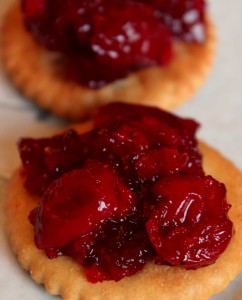 These are the best preserves ever.
These are the best preserves ever.
If I could only eat one jam for the rest of my life, this would be it.
Sour cherry preserves kick the lid off all other preserves.
<insert your favorite superlative here>
I rarely make such declarations and in fact poke fun at Alex who overuses superlatives. But seriously folks, I love sour cherry preserves.
The luminescent crimson cherries yields a rich yet adaptable flavor. Sugar mellows the tart just enough to not cause a pucker but a piquant zap to the tongue.
Tart cherry jam is as at home in a crepe as on a charcuterie plate. A schmear on cheese sandwich elevates the everyday to the remarkable. On a buttermilk biscuit? Oh my...
The sour cherry season in central Ohio is nearly over but don't dismay. Our friends to the north are just beginning their harvest. Lisa the Waitress, in her sorely missed blog, suggests ordering cherries from Michigan through Jacquemin or Yutzy's Farm. The most recent Yutzy's newsletter said "SOUR CHERRIES. ARRIVING IN 2 SHIPMENTS 2nd AND 3rd WEEKS OF JULY. PLEASE CALL TO ORDER AND FOR PRICING. 614-873-3815"
[print_this]
Sour Cherry Preserves
makes 6-7 half pints
7 cups sour cherries, pitted and crushed 4 teaspoons calcium water (comes with Pamona's pectin) 2 cups sugar (add more or substitute honey as your taste dictates) 4 teaspoons Pamona's pectin
1. Stew sour cherries in their juice over medium heat in a heavy bottomed pan for 5-10 minutes.
2. Meanwhile, sterilize jars, lids, and rings. I like to heat clean jars in boiling water in my canning pot and put lids and rings in a smaller pot of boiling water.
3. Stir calcium water into cherries.
4. Measure sugar in a bowl. Stir pectin into sugar.
5. Add sugar/pectin mixture to the cherries. Stir and heat to boiling.
6. Once at a boil, turn off the heat. Put a teaspoon of jam in a bowl and place in freezer for 1 minute to test for the set. If it gels, proceed with water bath canning. If it does not set, stir one half cup sugar, 1 teaspoon pectin, and 1 teaspoon calcium water into hot cherries. Return to boil and test again.
7. To can, ladle hot jam into hot jars, leaving a quarter inch head space. Place lids and rings on jars and tighten to finger tight. Return jars to the hot water bath and process at boiling for ten minutes.
8. Remove jars from boiling water and allow to cool on a dishcloth covered counter for 24 hours. Remove rings, wipe away leaks, and store in a cool dry place for up to two years.
[/print_this]
Related notes:
- My other favorite thing to do with sour cherries? Steep them in vodka for a month or two, sweeten with simple syrup to taste, and drink the most amazing liqueur for the rest of the year. Yum!
- Read Lil's post about sour cherries.
- Come to my strawberry canning demonstration at Easton Farmer's Market this Thursday to relieve yourself of fears about canning. I'll be in the Local Matters tent at 4 pm. I get to give away some canning supplies and samples too.
Added to Hearth & Soul 54.
Peach Jam using Pomona's Universal Pectin
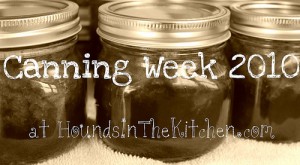 Canning week continues today with a recipe for fruit jam. Yesterday I discussed pectin. Tomorrow, we'll delve into vegetable canning.
Peaches are in season in Ohio and many other places across the country. Farmers markets and CSA baskets are overflowing with these fuzz covered wonders. The sweet juiciness of a peach is hard to resist raw, but if you can save enough to make peach jam, you will thank me in midwinter when Ohio fruits are long gone.
Canning week continues today with a recipe for fruit jam. Yesterday I discussed pectin. Tomorrow, we'll delve into vegetable canning.
Peaches are in season in Ohio and many other places across the country. Farmers markets and CSA baskets are overflowing with these fuzz covered wonders. The sweet juiciness of a peach is hard to resist raw, but if you can save enough to make peach jam, you will thank me in midwinter when Ohio fruits are long gone.
I use Pomona's Universal Pectin in fruit jams, purchased locally from the Clintonville Community Market. Made from citrus peels, the all-natural universal pectin requires no sugar. It will work with sugar, honey, or substitutes like Splenda. It is activated by calcium water, which is an extra step, but totally worth it for the superior results I notice.
I love that Pomona's gives me the flexibility to use the sweetener I wish in the quantity that tastes best to me. I often make large batches with Pomona's, something for bidden by other pectins. Each package makes 3 or 4 batches of jam, making it more cost effective than other brands too.
I recommend following a recipe exactly for the first few jams before experimenting. When you are comfortable with the process, you can begin to add spices and aromatics (cinnamon, clove, and ginger are fantastic with peaches), adjust sugar, and even adjust pectin to get the set you desire. Each box of Pomona's and other dry pectin include a recipe sheet. Food In Jars and Fresh Preserving (Ball jar sponsored) are two trustworthy websites with recipes.
The following recipe is the one I used this weekend at a jam canning class. You can substitute plums, sweet cherries, apricots, mangos, figs, or pear for the peaches. Higher acid fruits (berries, sour cherry, pineapple and kiwi) require less pectin and little to no lemon juice.
Peach Jam from Pomona's Universal Pectin
Recipe for 5 pints
4 cups peaches (12-15 ripe fruit) 1/4 cup lemon or lime juice 1/2—1 cup honey or 3/4–2 cups sugar 3 teaspoons Pomona's Universal Pectin powder 4 teaspoons calcium water (included in Pomona's pectin)
1. Sterilize jars and lids in boiling water. Let stand.
2. Blanch peaches to remove skin.
3. Pit, chop and mash fruit, measuring out 4 cups.
4. Add calcium water into large pan with mashed fruit and lime/lemon juice, stir well.
5. Mix pectin powder with measured sweetener in a separate bowl. Stir very well.
6. Bring fruit to a boil.
7. Add sweetener/pectin mixture and stir vigorously.
8. Return mixture to a full boiling boil and then remove from heat.
9. Fill jars to 1/4 inch from the top. Wipe rims clean and screw on 2 piece lid.
10. Put filled jars in boiling water to cover plus 1 inch. Boil 10 minutes.
11. Remove from water and let cool for 4—24 hours.
12. Store in a cool dry place. Eat within three weeks of opening.
What's your favorite jam recipe? Link them up!
You might think this is a post sponsored by Pomona's. It's not; I shell out my own money for their pectin and use it because I do believe it is superior to more commonly found brands.
What is Pectin? Why Use It?
It's canning week! I have five days of recipes, tips, and theory ready to share. Whether you are a beginning canner or looking to advance your skills, stay tuned this week. First up, pectin!
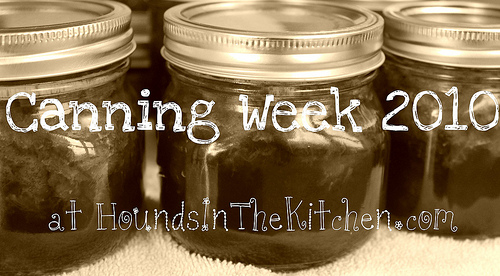 As a self-proclaimed homesteader, I am asked all sorts of questions that I would never think of myself. My friend Susan queried me about pectin the other day. I had some information to share but realized that I knew precious little about this jam staple.
As a self-proclaimed homesteader, I am asked all sorts of questions that I would never think of myself. My friend Susan queried me about pectin the other day. I had some information to share but realized that I knew precious little about this jam staple.
What is pectin?
My cookbooks and the trusty Internet inform me that pectin is a naturally occurring heteropolysaccharide found in the cell walls of plants. Apples and citrus peels contain high amounts of pectin; other fruits contain less.
Commercial pectin is made by extracting pectin from apples or citrus peels (by-products of juice production) with a hot dilute acid. The resulting extract is precipitated, washed and dried.
Pectin was first described by Henri Braconnot in 1825. Before his discovery, jams and jellies were set by including some apple peel or citrus peel in the jam or boiling the fruit and sugar mixture for extended periods of time.
Why pectin is used in jam making
Pectin sets or gels a fruit and/or juice mixture, giving it a spreadable texture. The gel forms as molecular chains of pectin change shape and trap water when in contact with fruit acids. This process does not aid in the preservation of jam or jelly; room temperature shelf stability is achieved by acid content and pressure and temperature changes.
I prefer a fruit-forward jam with minimal sugar. Using pectin allows me to achieve a spreadable texture within these constraints. Pectin also allows a short cooking time (1 minute at a full boil) which may preserve some nutritive value over no-pectin recipes which call for upwards of 30 minutes of boiling.
Some continue to favor no-pectin recipes. Jams and jellies made without pectin can still have a jelled consistency if a) the recipe contains the right amount of pectin-containing fruits or b) large amounts of sugar are used and the mixture is allowed to boil until thick. Also, some do not mind if the jam turns out a bit runny.
Types of pectin
Ball, Sure-Jel, and Octo all make dry high-ester pectin for full or low sugar. Packets can be found in grocery stores, hardware stores (in season), and online. Most have an expiration date beyond which the pectin will less reliably set.
Pomona's Universal Pectin, my favorite brand, is a low-ester pectin that requires the use of calcium water to form the gel. This brand is found online or at natural food stores. Locally I pick it up at the Clintonville Community Market.
Making your own pectin is another alternative. You simply boil under ripe apples or crab apples with lemon juice and water, strain the mixture, and seal it in jars. Mother Earth News has a complete recipe.
Tomorrow I'll share why I love Pomona's with a peach jam recipe.
What else do you want to know about pectin?
This post was entered in the Fight Back Friday August 6, 2010. Click through to read more local sustainable food acts.


